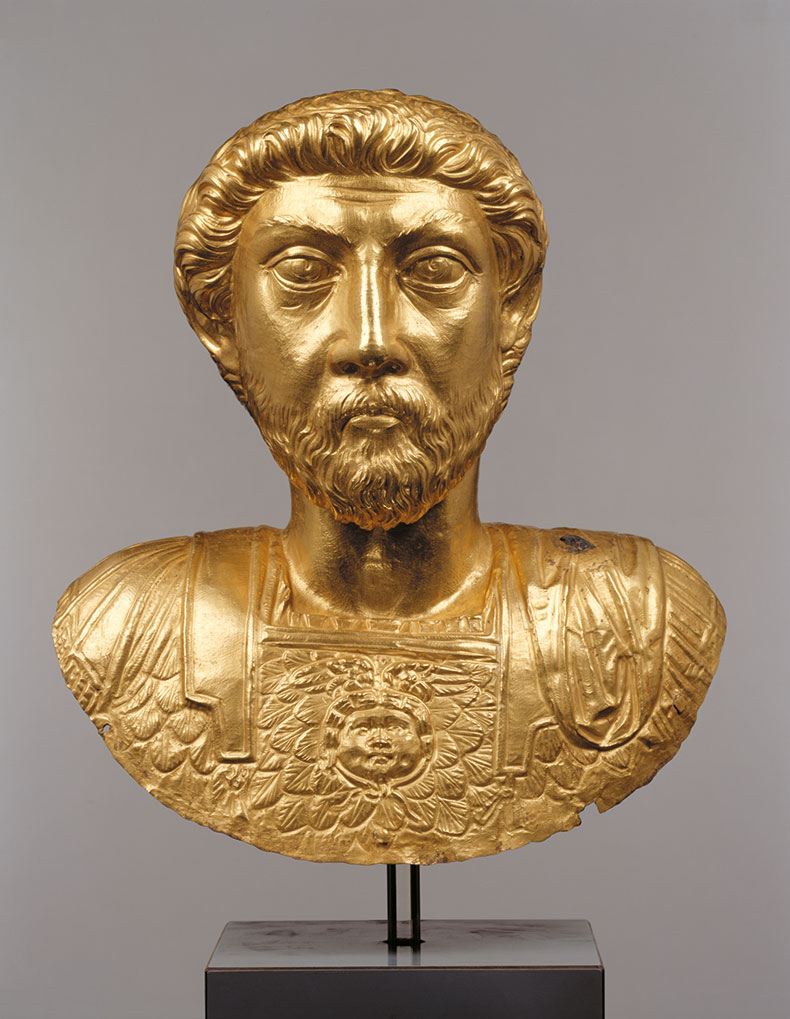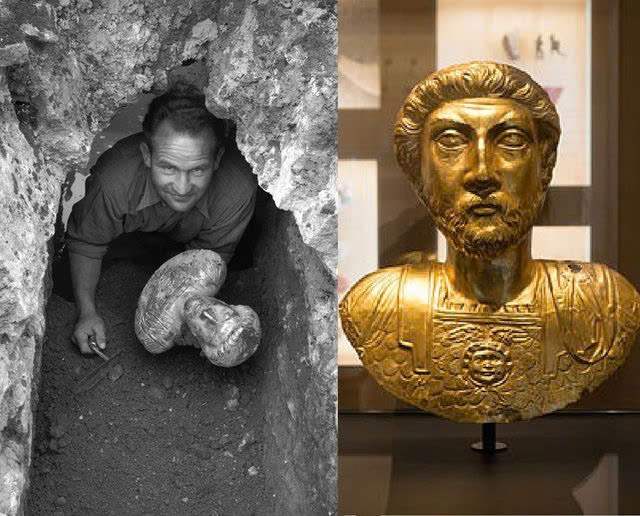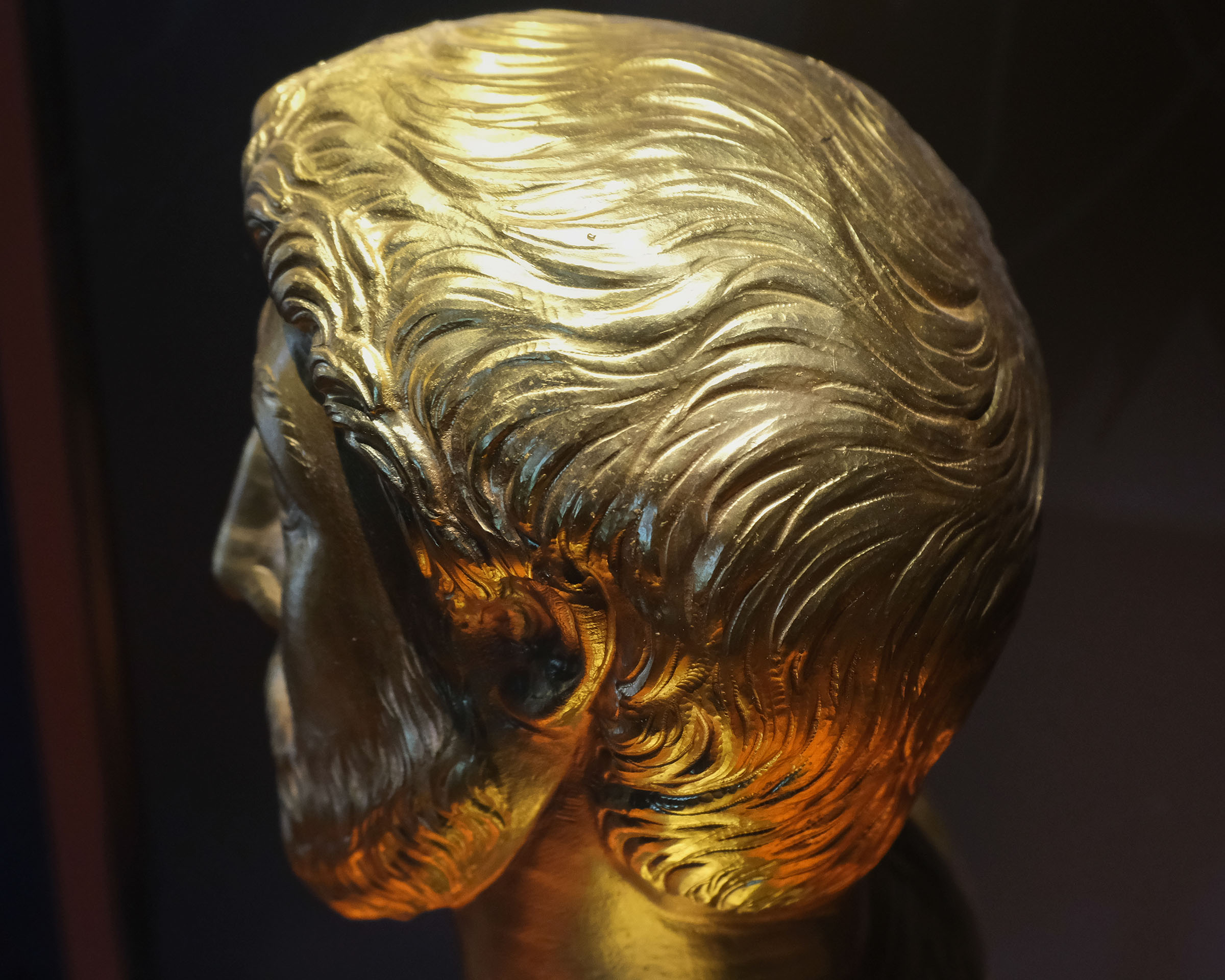Introduction
In 1939, an important archaeological discovery took place in Avenches, once the capital of the Helvetii tribe in modern-day Switzerland. During excavations at Aventicum, archaeologists unearthed a stunning relic—a golden bust of the esteemed Emperor Marcus Aurelius. This remarkable artifact not only represents a masterpiece of art but also symbolizes the power and sophistication of the Roman Empire.

The golden bust is recognized as the largest known emperor’s bust crafted from precious metal, showcasing the exquisite artistry and reverence that the Romans had for their emperor. Its survival over the centuries is nothing short of miraculous, given that many golden relics from antiquity have been melted down or lost to history. This post will focus on the historical context of Aventicum, the significance of the golden bust, its artistry and symbolism, as well as its preservation and the legacy it leaves behind.
The Historical Significance of Aventicum
Aventicum served as a critical center for the Helvetii tribe and was integrated into the Roman Empire in 15 BC under Emperor Augustus. This marked a significant transformation, turning Aventicum into a prosperous urban center characterized by grand architecture and rich culture.

Strategically located along vital trade routes, Aventicum became a melting pot of Roman and Celtic cultures. Archaeological excavations have uncovered numerous architectural structures, artistic artifacts, and invaluable relics, allowing us to gain deeper insights into the daily lives and societal practices of ancient residents.
The discovery of the golden bust of Emperor Marcus Aurelius at Aventicum holds immense importance not just for archaeology but also for understanding the city’s pivotal role in the greater context of the Roman Empire.
The Remarkable Golden Bust of Marcus Aurelius
The golden bust of Emperor Marcus Aurelius is one of the most prominent discoveries at Aventicum. Standing at an impressive height of 54 centimeters (21 inches), it is recognized as the largest emperor’s bust made from precious metal. This artifact captures attention not only for its size but also for its intricate craftsmanship.

The bust presents a lifelike portrayal of the emperor’s features, with each detail carefully sculpted. The folds of his robes are rendered meticulously, showcasing the skills and dedication of artisans from that era.
What is particularly noteworthy is that this golden bust has not been melted down or destroyed over time. Its preservation reflects both the respect with which it was likely treated and the cultural significance it held for those who created and admired it.
The Artistry and Symbolism of the Golden Bust
The golden bust of Marcus Aurelius is more than an archaeological find; it is a stunning work of art that illustrates the exceptional craftsmanship and artistic achievements of the Roman Empire. The level of detail and precision in the sculpture highlights the skill of the artists who created it.

The use of gold adds not only material value but also symbolizes authority and reverence. The bust serves as a powerful representation of the emperor himself, embodying the grandeur and prestige associated with the imperial system.
Additionally, the serene expression on the emperor’s face reflects his philosophical beliefs, particularly Stoicism. This aspect lends the bust a timeless quality, resonating deeply with both ancient Romans and future generations.
Preservation and Legacy of the Golden Bust
The survival of the golden bust through centuries is nothing short of extraordinary. In a world where many precious metal artifacts from antiquity have been lost or melted down, this relic’s preservation speaks to the unique circumstances that allowed it to endure.
Following its discovery in 1939, the bust quickly became an essential part of the Avenches Museum’s collection. Through meticulous conservation efforts, it has been maintained in excellent condition, allowing visitors to appreciate its artistic beauty and cultural significance.

The legacy of Marcus Aurelius’s golden bust extends far beyond Switzerland. This remarkable artifact has become a symbol of the enduring power and cultural significance of the Roman Empire, inspiring awe in all who witness it.
Its inclusion in scholarly publications, exhibitions, and media coverage has further solidified its status as a true treasure from antiquity. It serves as a tangible connection to history, enriching our understanding of artistic and cultural achievements during this period.
As a result, this golden bust has become a source of pride for both Avenches and Switzerland as a whole. Its preservation represents not just an artifact but also a profound connection to our shared human history.
Conclusion
The discovery of the golden bust of Emperor Marcus Aurelius at Aventicum in 1939 marks a significant milestone in our exploration of Roman history and culture. This exceptional artifact stands as a testament to the artistry, power, and sophistication that characterized one of history’s greatest empires.
The astonishing survival of this priceless relic through centuries highlights the importance of cultural preservation. Its legacy goes beyond mere historical interest; it serves as a reminder of our responsibility to honor and learn from our past.
As we continue to uncover and explore the wonders of ancient civilizations, let us cherish treasures like Marcus Aurelius’s golden bust. They connect us to a rich heritage that continues to inspire curiosity and admiration across generations.

